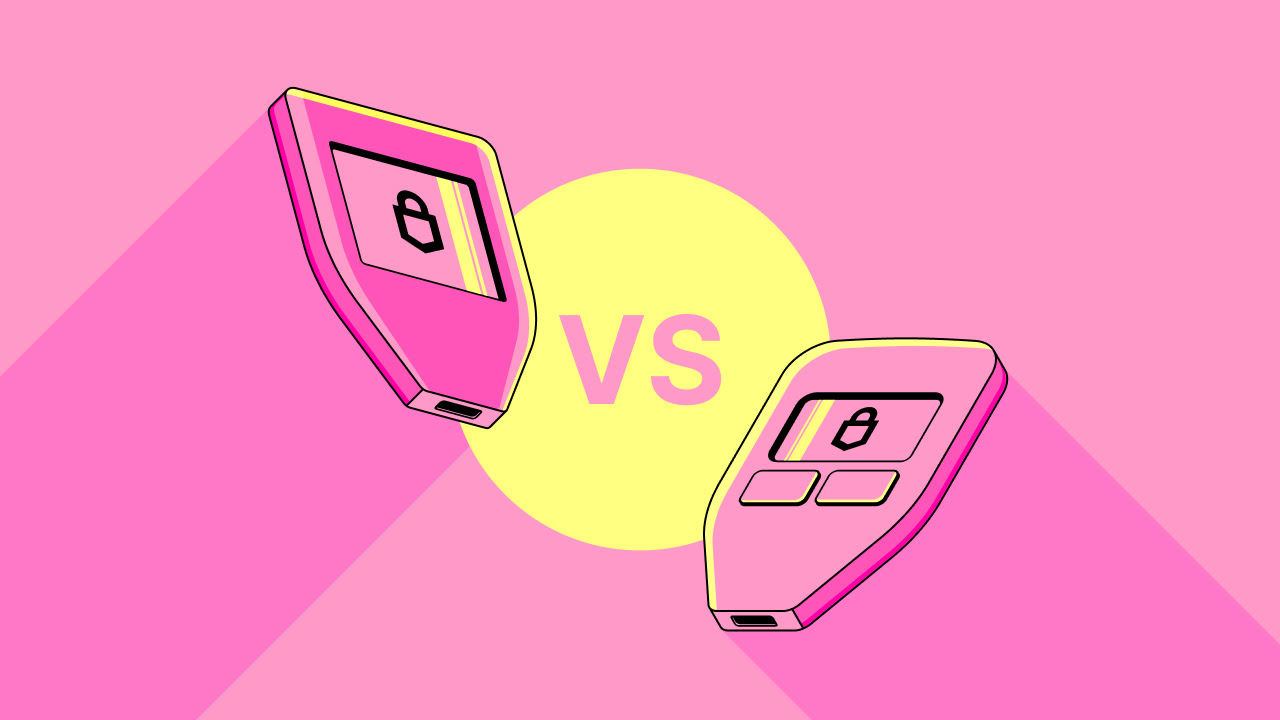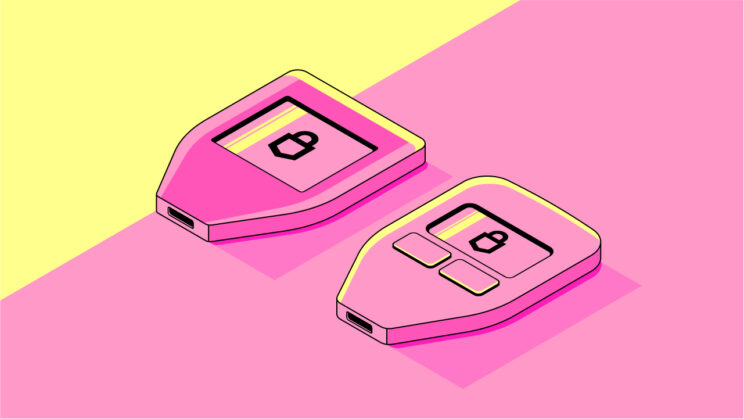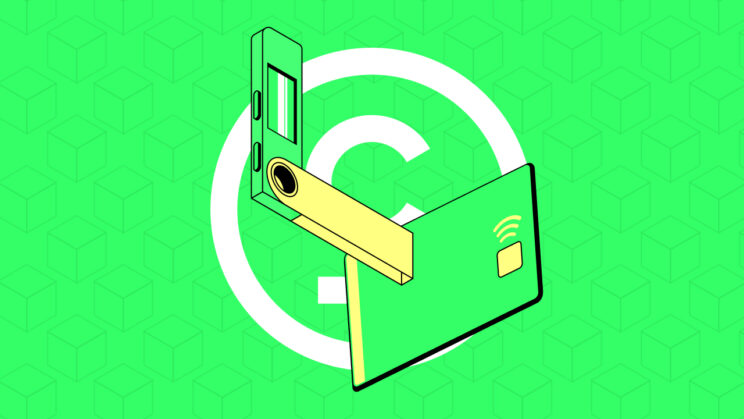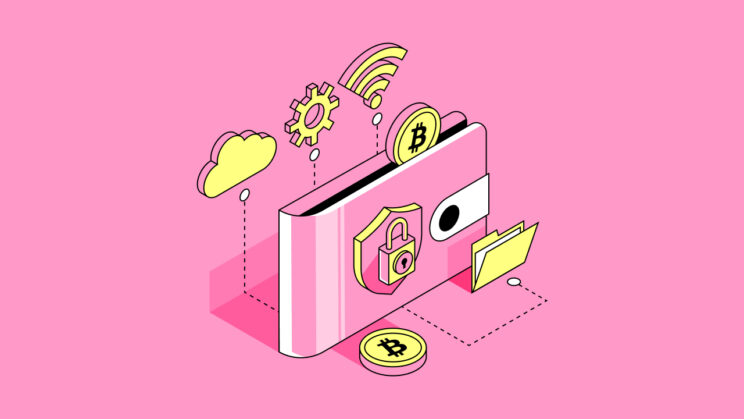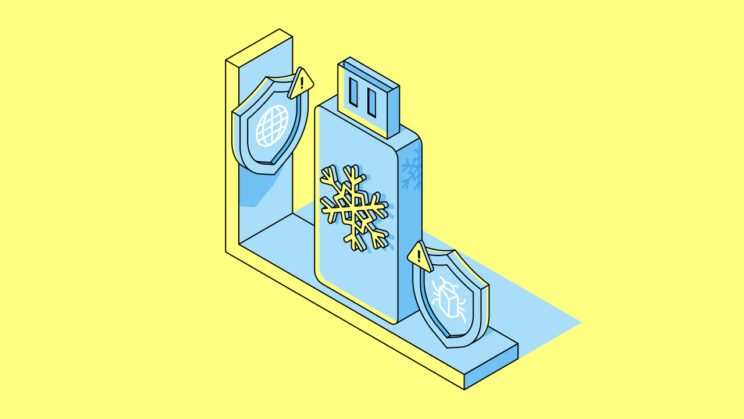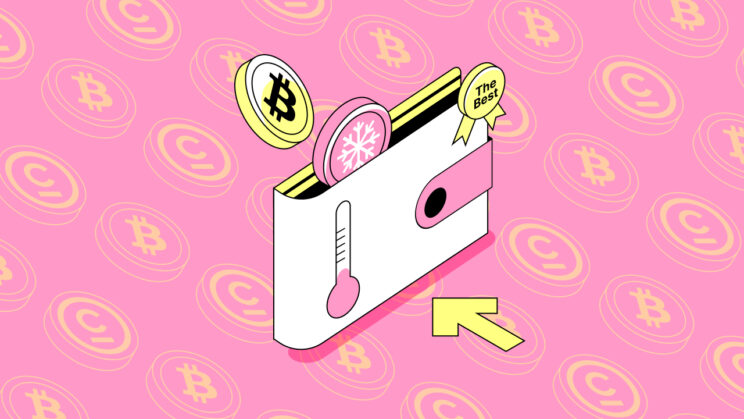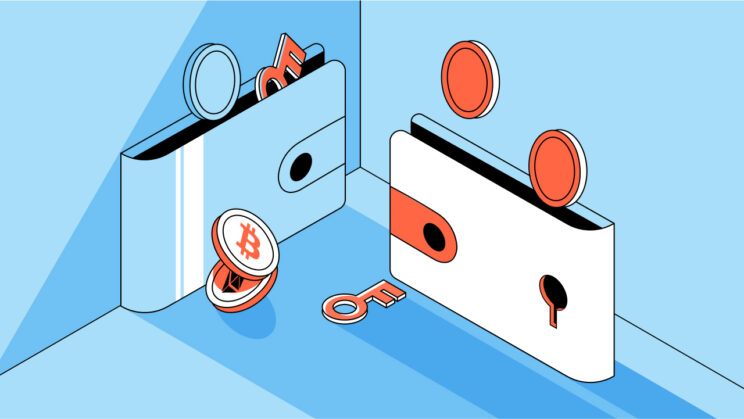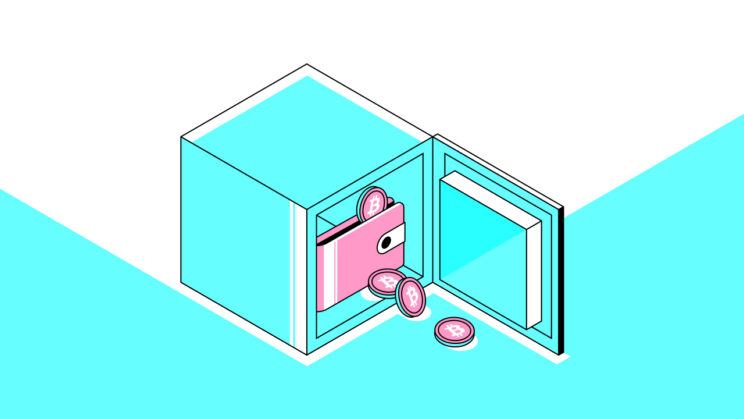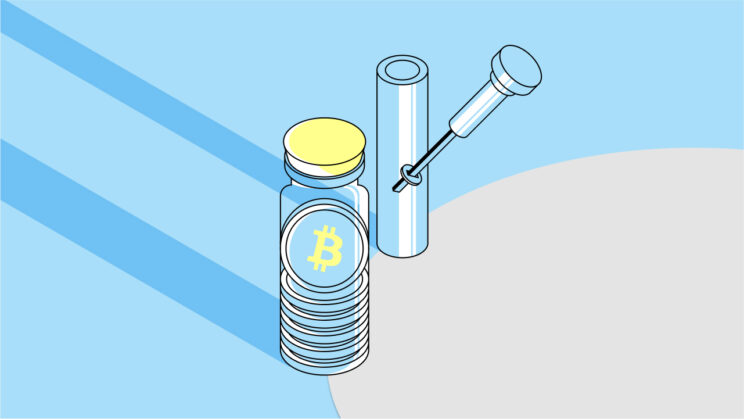As the cryptocurrency market continues to evolve, the need for secure storage solutions becomes paramount. Hardware wallets have emerged as a trusted means of safeguarding digital assets, and two prominent contenders in this space are the Trezor Model One and the Trezor Model T. In this comprehensive comparison, we will explore various facets of these hardware wallets, enabling you to make an informed choice that aligns with your requirements.
What is a Trezor Wallet
Cold wallets, also known as cold storage wallets, are a type of cryptocurrency wallet that is kept offline and disconnected from the internet. They are used to securely store cryptocurrencies, such as Bitcoin or Ethereum, by keeping the private keys offline, making them less susceptible to hacking or online threats. Cold wallets provide an extra layer of security since they are not connected to the internet, reducing the risk of unauthorized access. They are especially useful for long-term storage of cryptocurrencies that are not actively being traded or used in transactions.
One popular type of cold wallet is the Trezor wallet. Trezor offers hardware wallets designed to provide a secure and user-friendly way to store cryptocurrencies offline. The Trezor wallet comes in different models, such as the Trezor Model One and the Trezor Model T. These wallets store the private keys offline and require users to physically interact with the device to perform transactions. The Trezor Model T features a full-color touchscreen display, providing a more intuitive user experience. It supports various cryptocurrencies and offers features like secure PIN protection and backup options. One of its backup options is the Shamir Backup, which allows users to split their recovery seed into multiple parts, enhancing security.
Trezor wallets are considered reliable options for users who prioritize security and want to keep their cryptocurrencies safe from online threats. The user experience of Trezor wallets is often praised for its simplicity and effectiveness in securely managing digital assets.
Trezor Model One vs Trezor Model T
TREZOR Model One vs TREZOR Model T comparison can provide you with the knowledge needed to make an informed decision that aligns with your unique requirements. The choice between the TREZOR Model One and Model T isn’t just about design aesthetics or price points; it’s about identifying the features that resonate most with your cryptocurrency management approach. To help you navigate this decision, we’ve dissected these hardware wallets based on several essential criteria:
- Design and User Interface: The physical design and user interface of a hardware wallet can significantly impact its usability. We’ll delve into the ergonomic aspects of both models, comparing factors like size, weight, screen types, and button configurations.
- Security Features: A core consideration when evaluating hardware wallets is their ability to keep your cryptocurrencies safe from potential threats. We’ll analyze the security measures in place for both the Model One and Model T, including encryption methods, PIN code protection, and recovery options.
- Cryptocurrency Compatibility: Cryptocurrency enthusiasts often hold a diverse portfolio of digital assets. We’ll explore which coins and tokens are supported by each wallet, highlighting any disparities that might influence your choice.
- User Experience: Ease of use and user-friendliness can make a substantial difference in your wallet management routine. We’ll outline how both devices handle tasks such as setting up, accessing accounts, confirming transactions, and more.
- Price Point: While the protection of your digital assets is priceless, understanding the cost implications is essential. We’ll compare the price tags of the TREZOR Model One and Model T, helping you assess whether the additional features of the latter justify its higher cost.
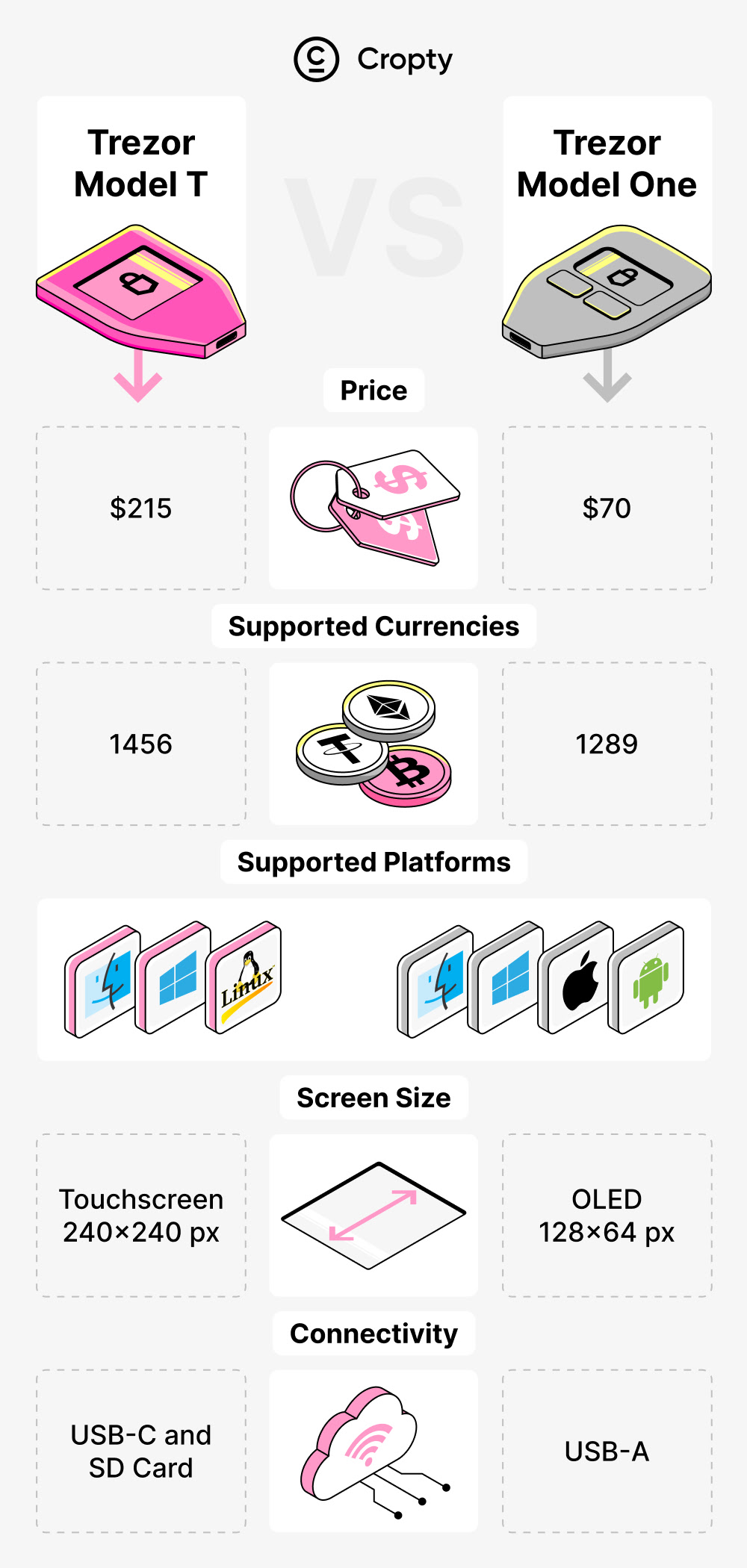
By dissecting these aspects, you’ll gain insights into the distinct advantages and limitations of each hardware wallet. Whether you’re a cryptocurrency novice seeking a user-friendly option or a seasoned investor looking for advanced security features, this comparison aims to equip you with the knowledge required to select the hardware wallet that aligns with your preferences. Now, let’s dive into the details of the TREZOR Model One and Model T, shedding light on their unique attributes and helping you make an informed decision.
Packaging Comparison
When it comes to packaging, both the Trezor Model One and the Trezor Model T exhibit a commitment to security. Each device arrives with a holographic seal on its packaging, an essential feature that ensures the integrity of the contents and safeguards against tampering. Inside, users will find the hardware wallet itself along with a crucial component – the recovery seed. However, one notable difference lies in the length of the recovery seed. The Trezor Model One necessitates a 24-word recovery seed, while the Trezor Model T employs a 12-word seed for backup purposes.
Trezor Model One packaging
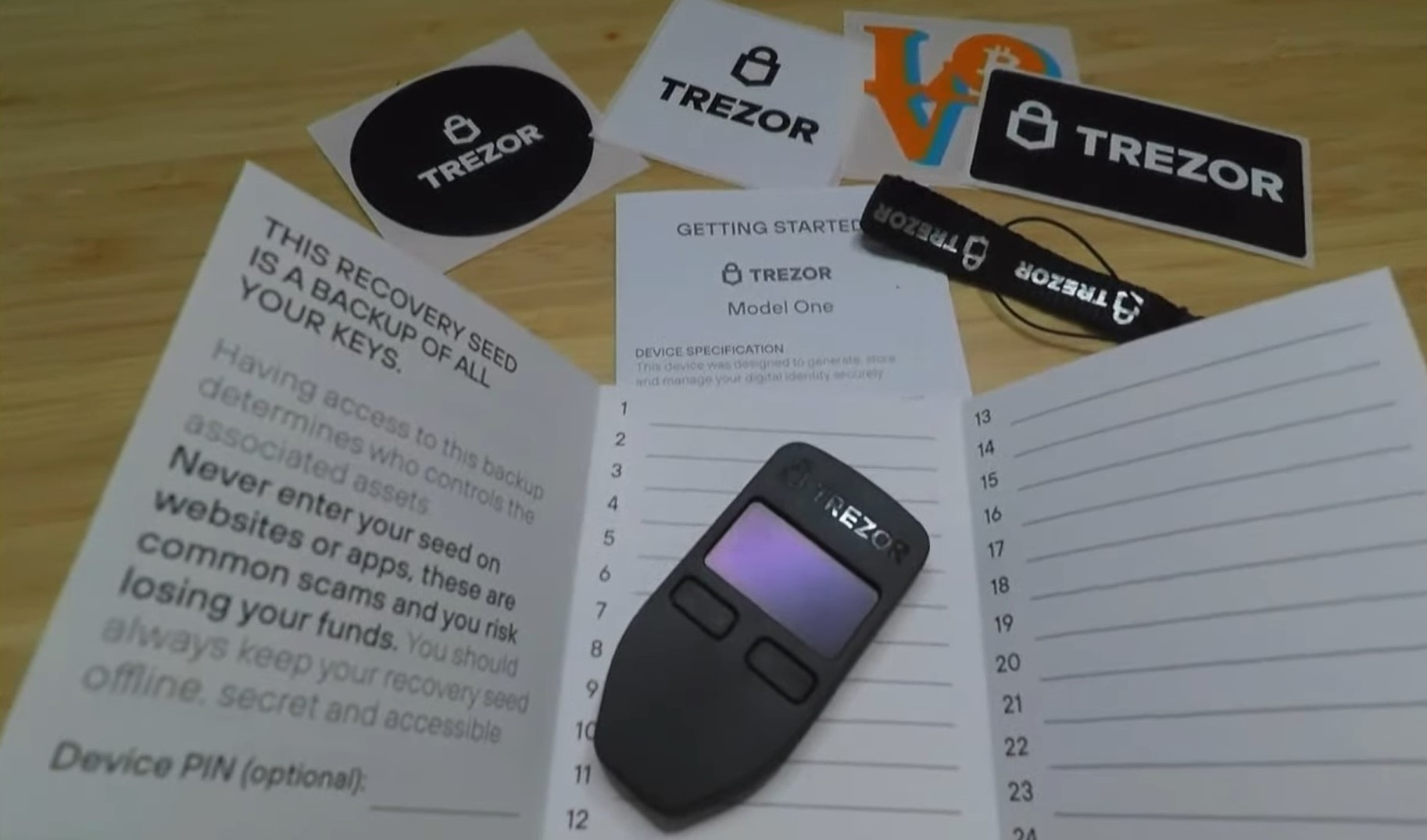
Trezor Model T packaging
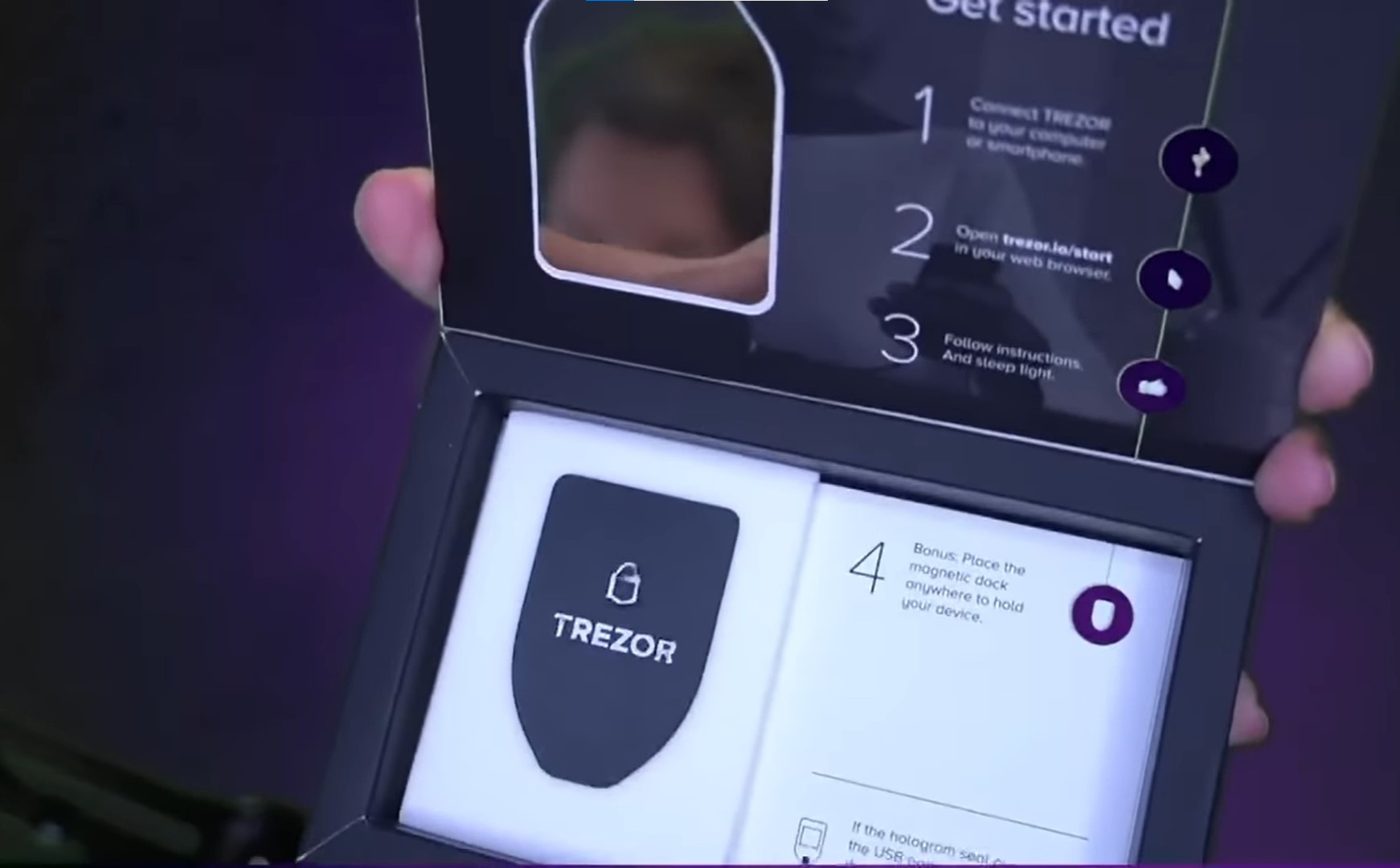
Pricing Comparison
The financial aspect plays a pivotal role in the selection process. At the time of this comparison, the Trezor Model One is attractively priced at $63 USD or 53 euros. In contrast, the Trezor Model T commands a higher price tag of $221 USD or 189 euros. It’s crucial to bear in mind that cryptocurrency markets are dynamic, and pricing may evolve over time. To obtain the most current and accurate pricing details, it’s recommended to refer to the official Trezor website. The Trezor Model One provides an affordable entry point into hardware wallet security, making it an ideal option for budget-conscious users. Conversely, the Trezor Model T caters to those seeking a premium experience, offering advanced features for a higher cost.
| Aspect | Trezor Model One | Trezor Model T |
| Budget-Friendly | Yes | No |
| Advanced Security | Secure, but lacks Shamir backup and touchscreen PIN entry | Enhanced security with Shamir backup and touchscreen PIN entry |
| Supported Coins | Supports wide range of cryptocurrencies | Supports a wide range of cryptocurrencies |
| Recommended Use Case | Entry-level users seeking affordability | Supports a wider range, including Ripple, Cardano, EOS, Tazos, Monero, and more |
Supported Coins
Compatibility with various cryptocurrencies is a pivotal consideration for hardware wallets. While both the Trezor Model One and the Trezor Model T support an array of coins and tokens, a noteworthy distinction lies in their support for Cardano. The Trezor Model T boasts Cardano compatibility, a feature absent in the Trezor Model One. Prospective users should consult the official Trezor website to access an exhaustive list of supported coins for each device, ensuring that their preferred cryptocurrencies are accommodated.
Processor Comparison
Underlying hardware plays a crucial role in a hardware wallet’s performance. The Trezor Model One houses an ARM Cortex-M3 processor operating at 120 MHz. Conversely, the Trezor Model T employs an ARM Cortex-M4 processor with a clock speed of 168 MHz. The Cortex-M4 processor is renowned for its efficiency, low power consumption, and versatility in various applications, including the secure management of cryptocurrencies. The presence of the Cortex-M4 processor in the Trezor Model T contributes to enhanced performance and broader feature capabilities.
Design Comparison
In terms of design, there are distinct differences between the Trezor Model One and the Trezor Model T. The Model T is slightly larger and weighs approximately 10 grams more than the Trezor One. The Trezor One boasts two single buttons and a small monochrome screen capable of displaying up to six lines of text. In contrast, the Trezor Model T features a vibrant full-color LCD touchscreen interface.
| Aspect | Trezor Model One | Trezor Model T |
| Size and Weight | Slightly smaller and lighter | Slightly larger and heavier |
| Buttons | Two single buttons | Full-color LCD touchscreen |
| Screen | Monochrome, displays up to 6 lines of text | Full-color display |
| USB Connection | Micro USB | USB-C |
| Included Cable Length | Short (10 cm) | Longer (45 cm) |
| Additional Features | None | Includes a magnetic dock for convenience |
Both devices operate by plugging them into your laptop or computer, with a notable distinction in the type of USB connection they utilize. The Trezor One employs a micro USB connection, while the Trezor Model T employs the increasingly popular USB-C connection. Moreover, the Trezor Model T includes a longer USB cable (45 centimeters) compared to the short 10-centimeter cable of the Trezor One. The Model T also comes with a magnetic dock, enhancing convenience for everyday use.
Display Comparison
User interaction and interface are significant aspects of hardware wallets. The Trezor Model One features a monochrome display coupled with two buttons for navigation. In contrast, the Trezor Model T introduces a modern touch with a full-color touchscreen interface. The touchscreen not only enhances the visual experience but also simplifies device interaction. While both models provide secure PIN and passphrase entry, the Trezor Model T’s touchscreen element introduces an extra layer of user convenience.
Trezor Model One screen
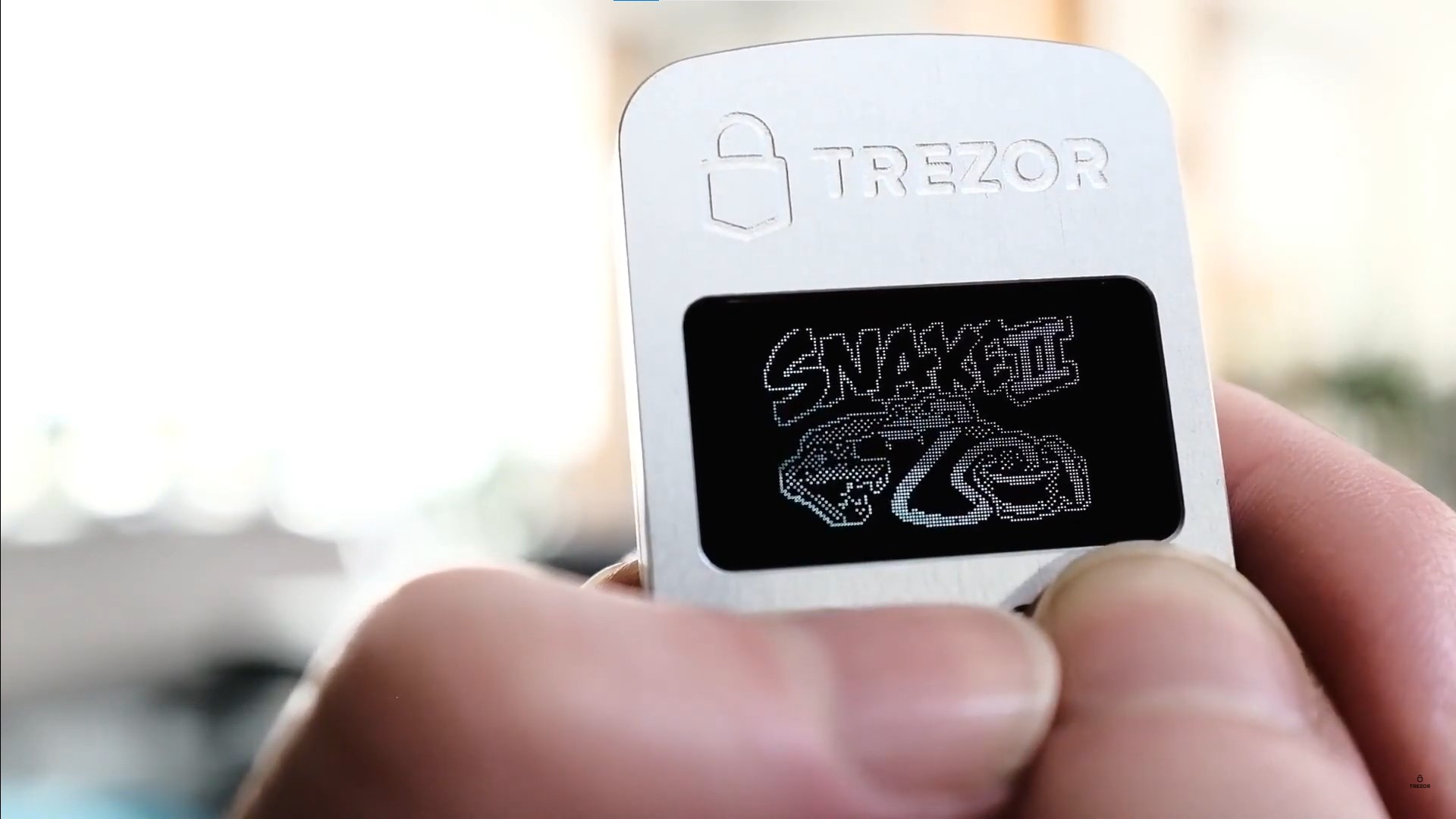
Trezor Model T screen
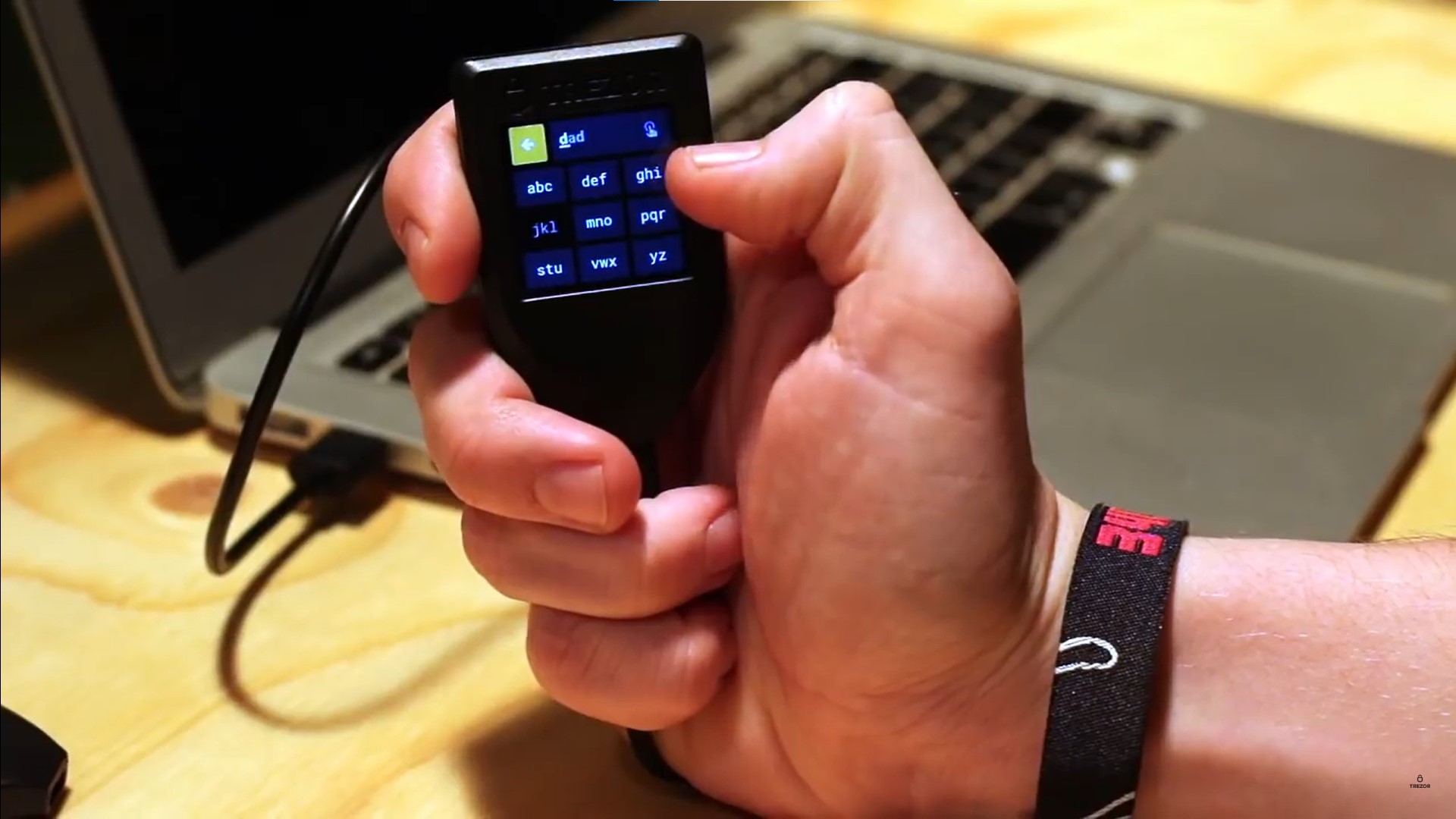
Security Differences
Security is paramount in the realm of cryptocurrency, and both Trezor devices excel in this aspect. However, there are subtle differences that set them apart. Notably, the Trezor One employs a 24-word seed phrase for recovery purposes, while the Model T employs a 12-word seed phrase. This might seem counterintuitive, given that the Model T is the pricier option. However, even a 12-word seed phrase offers an incredibly secure level of protection, with the number of possible permutations being astronomically high. The decision to reduce the seed length was based on the fact that even with 12 words, the likelihood of someone guessing all 12 English words in the correct order is virtually zero.
| Aspect | Trezor Model One | Trezor Model T |
| Seed Phrase Length | 24-word seed phrase | 12-word seed phrase |
| Shamir Backup | Not supported | Supported |
| Touchscreen PIN Entry | Not supported | Enhanced security against keyloggers |
The Model T introduces an additional layer of security known as a Shamir backup. This feature allows you to create multiple share phrases, which can be stored in different locations or shared with trusted individuals. Requiring at least two share phrases to access your seed phrase adds an extra level of security to the Model T that the Trezor One does not offer. Another advantage of the Model T lies in its touchscreen, which enables you to input your PIN directly on the device’s screen, enhancing security against potential keyloggers.
Extra Features Comparison
Both the Trezor Model One and the Trezor Model T come equipped with additional features to augment their functionality:
- Bitcoin-Only Firmware: Available for both models.
- Micro SD Card Support: Exclusive to the Trezor Model T.
- FIDO Universal Second Factor (FIDO U2F) Authentication: Limited to the Trezor Model T.
- Password Manager: Offered by both models.
- SSH Authentication: Provided by both models.
- Premium Support and EU Design: Accessible for both models.
Trezor Model T Quick Review
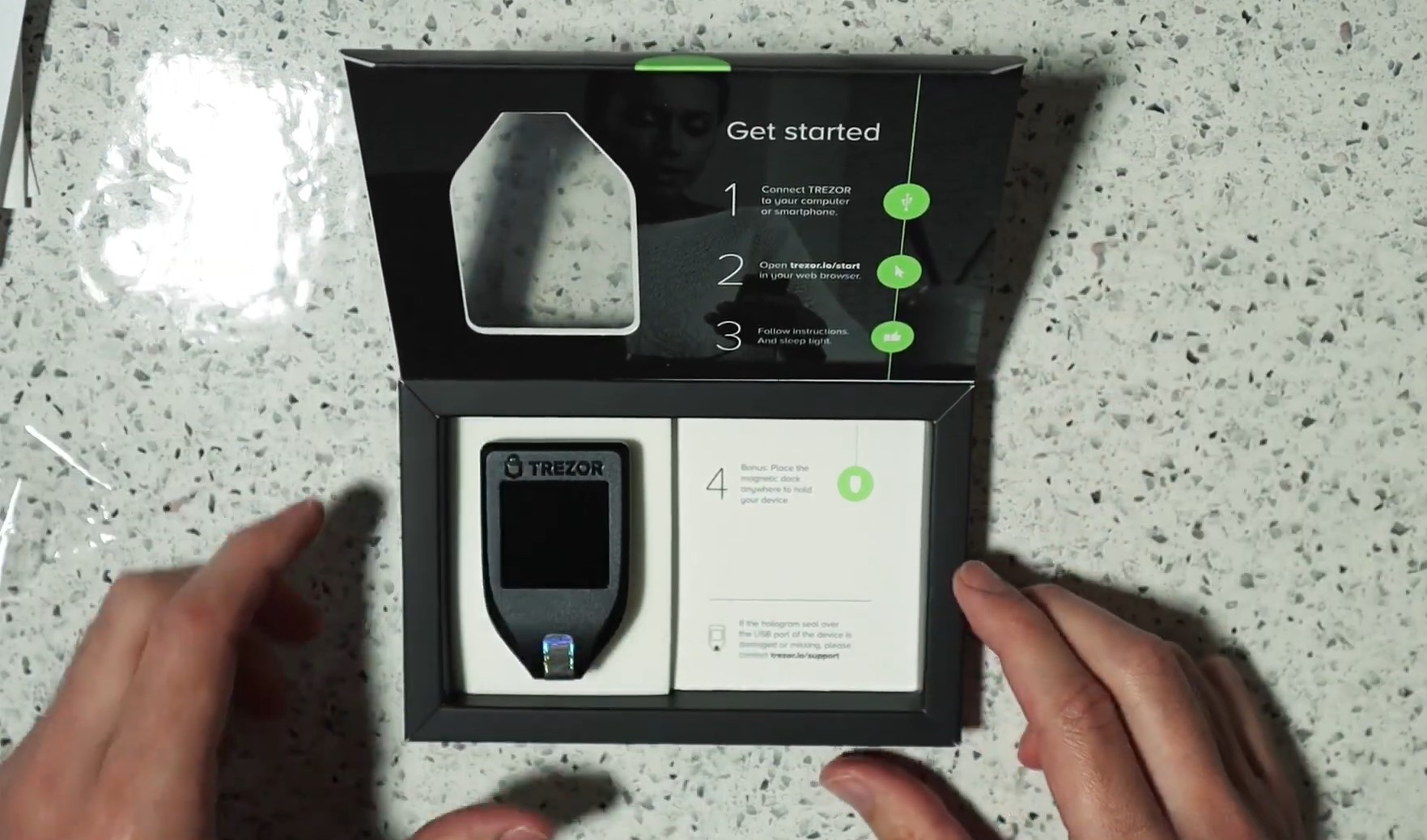
The TREZOR Model T stands as a robust and feature-rich iteration of the acclaimed TREZOR One hardware wallet. In our 2-minute review, we delve into whether its higher price tag is justified. Serving as a physical device for secure offline storage of cryptocurrencies, the TREZOR Model T was launched in 2018 by Satoshi Labs, a longstanding figure in the hardware wallet space. With support for over 1000 coins and tokens, including XRP, XMR, and EOS, the Model T boasts a more extensive range than its predecessor.
A standout feature is its touchscreen, setting it apart from other hardware wallets. This touchscreen simplifies wallet setup directly on the device, safeguarding sensitive data from exposure on your computer. However, some users may find the screen size a tad small, impacting usability. Priced at around $170 (before VAT taxes), the Model T commands a higher price compared to other popular wallets.
Trezor Model One Quick Review
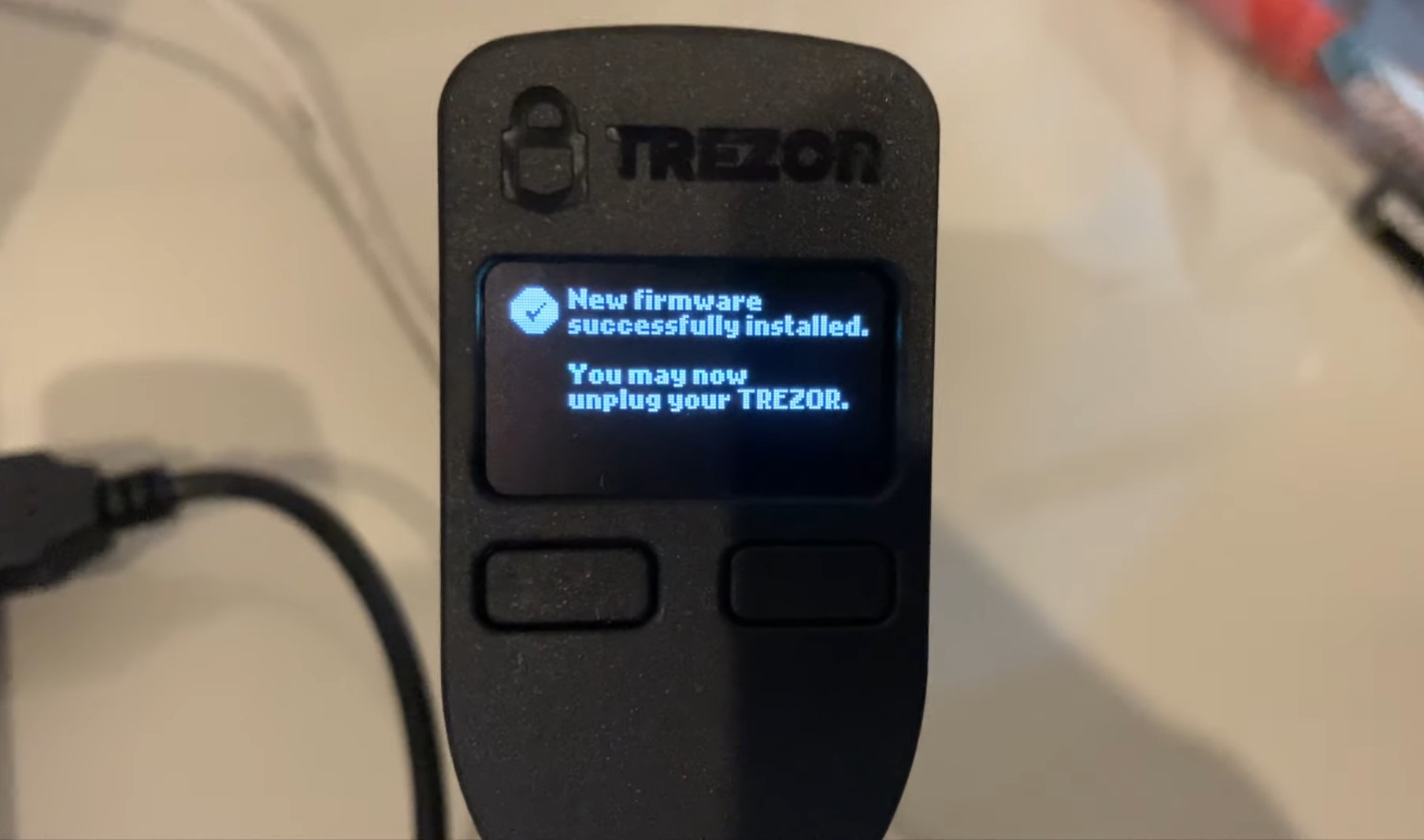
The TREZOR One, the pioneer of hardware wallets and a mainstay in the market for years, is the focus of our 2-minute review. Manufactured by Satoshi Labs, a reputable figure since 2013 in the Bitcoin community, the TREZOR One has stood the test of time. Supporting over 1000 coins and tokens, it is a versatile option, though notable omissions like XMR, XRP, and EOS exist.
Setting up the TREZOR One is straightforward – connect the device, install software, and follow instructions. Assign a PIN code and record a 24-word seed phrase, safeguarding it as the means to restore funds if the device is lost or damaged. An added layer of security, passphrase protection, is available for account security.
Priced at $55 (pre-VAT), the TREZOR One is among the most affordable hardware wallets. In comparison to the Ledger Nano S, it shines in terms of open-source software and competitive pricing. The Nano S holds its own with Ripple and Monero support and a robust interface. The TREZOR One earns 4.5 stars from 99Bitcoins, offering battle-tested security, affordability, and support for various cryptocurrencies, though missing some popular options like Ripple, Monero, and EOS.
Similarities Between TREZOR Model One and Model T
Both the TREZOR Model One and the Model T share fundamental characteristics that make them reliable choices for safeguarding your cryptocurrencies. Despite their differences, these hardware wallets are united by their commitment to security, user-friendliness, and cryptocurrency support.
1. Core Security Features: Both devices are designed to provide robust security for your digital assets. They utilize a secure element to store private keys offline, effectively shielding them from online threats such as hacking and malware attacks. This ensures that even if your computer is compromised, your sensitive information remains protected. Additionally, both models offer the capability to set up a PIN code, which acts as a layer of authentication before accessing your wallet. This basic yet vital feature prevents unauthorized access to your device.
2. Seed Phrase Backup: Both the TREZOR Model One and Model T emphasize the importance of seed phrase backups. A 24-word seed phrase is generated during the setup process and acts as a fail-safe mechanism. This phrase, known only to the user, can be used to recover the wallet’s contents if the physical device is lost or damaged. By requiring users to note down the seed phrase during setup, both models ensure that owners have a secure means of restoring their funds in case of unexpected events.
3. Multi-Cryptocurrency Support: Whether you opt for the TREZOR Model One or the Model T, you gain access to an extensive range of supported cryptocurrencies. With over 1,000 coins and tokens compatible with both models, you can diversify your portfolio and store a variety of digital assets in a single device. This versatility is a key strength of both devices, catering to users who hold a mix of cryptocurrencies and tokens.
4. Satoshi Labs Legacy: Both models are products of Satoshi Labs, a respected pioneer in the hardware wallet industry. Founded in 2013 and esteemed in the Bitcoin community, Satoshi Labs has a legacy of developing secure and reliable solutions for cryptocurrency storage. This lineage ensures that both the TREZOR Model One and Model T benefit from the expertise and commitment to security cultivated by the company over the years.
Conclusion
The choice between the Trezor Model One and the Trezor Model T hinges on your financial considerations and desired feature set. The Trezor Model One offers an economical option, delivering robust security and support for an extensive range of cryptocurrencies. This makes it a suitable choice for individuals mindful of their budget. Conversely, the Trezor Model T emerges as the premium offering, flaunting advanced capabilities, a full-color touchscreen, and a high-performance processor. This model caters to those who prioritize top-tier security and convenience.
In your decision-making process, remember that each device has its strengths, aligning with diverse preferences and requirements. Regardless of your choice, ensure that you purchase from the official Trezor website to guarantee authenticity and security. The safeguarding of your cryptocurrency assets should remain paramount in your considerations.
